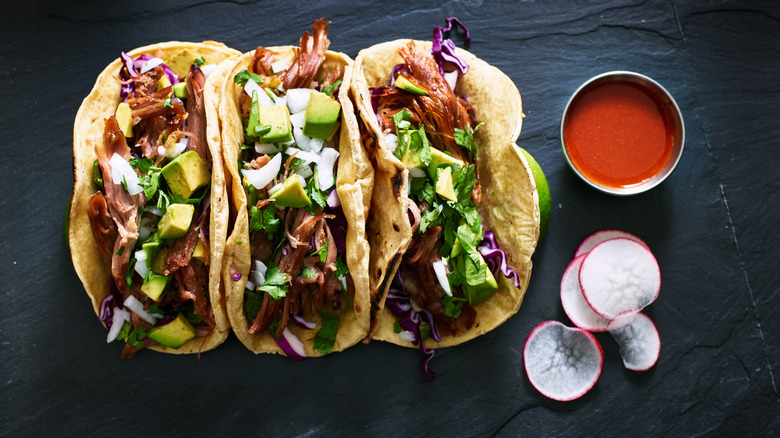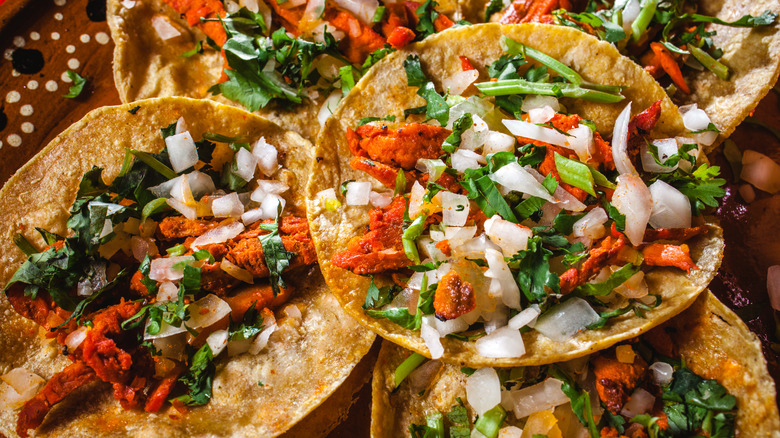The Real Difference Between Carnitas And Al Pastor
Carnitas and al pastor tacos are two of the most popular taco fillings you can find, and though they're both made with pork, there are some distinct differences between the two.
Carnitas starts with a pork shoulder (via PopSugar). It's seasoned with herbs and spices and braised in lard. It's then pulled, similar to barbecue, and then roasted in the oven to achieve crispiness. The level of crispiness can vary, as some prefer the meat to be more moist and tender and some prefer it to have a bit more of a crunchy crisp to it (via Latino Foodie). They are something of a hybrid between rillettes and pulled pork. In addition to its use in tacos, carnitas also finds a home in tamales, burritos, and tortas. The dish can be traced to the Michoacán state in Mexico's western region. Cooking carnitas at home can be done easily with a slow cooker, and the meat is often finished off by roasting.
The history of al pastor
Al pastor, on the other hand, exists thanks to the Lebanese traders who came to Mexico City in the 1900s. Some 800,000 Lebanese and their descendants live in Mexico today and brought their food and culture with them (via BBC). Initially, before the term "al pastor" took off, the dish was referred to as tacos Arabes (Arab tacos). In their early iteration, they were cooked with lamb, a more widespread meat choice in the Middle East, but given the fact that lamb isn't particularly popular in Mexico, it was eventually replaced with pork.
Al pastor is thinly shaved pieces of pork that have been roasted on a vertical spit. This cooking style mimics the shawarma of the Middle East, which is where its Lebanese history comes into play. The meat is marinated with achiote, a Mexican seasoning paste, and guajillo chiles. It's popular to put onion and pineapple slices on top, and slice off bits of the grilled pineapple to top the taco, although making the dish at home can require getting creative in the cooking process as few people have a vertical spit in their kitchen — but recipes that replicate the tastes and textures can be pulled off (via My Latina Table).

